We often find ourselves asking the question “Who is handling power” for many of the events we do. Many times, we can see the look on people’s faces that it isn’t something they want to handle. The quicker someone can just “handle it”, the better. Since electricity is an essential part of any event, we wanted to come up with a way to make it simpler to understand. This article will break down electricity in practical terms so that you are able to understand how it works and how it relates to your event. You will be better equipped and feel more confident for conversations relating to electricity.
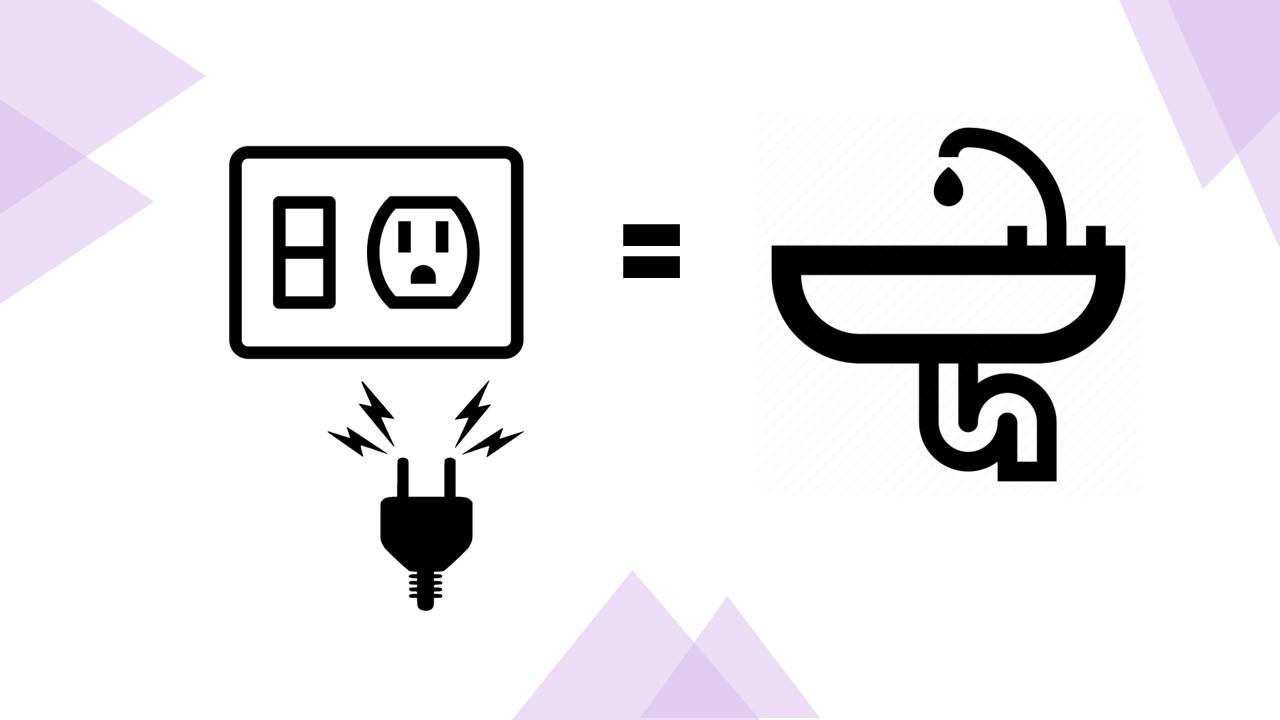
Although the two together normally cause devastating consequences, let’s think of electricity as water for our demonstrative purposes. The way that water flows throughout the plumbing of a building is similar to the way electricity flows throughout the wiring system of a building. Think about each outlet on a wall in a room as a faucet. Think about each piece of electronic equipment as a bucket that needs to be filled completely to the top to operate properly. When you plug something electrical into an outlet, it’s just like turning on the faucet and filling up a bucket.
Lets get to some basics about electricity inside of a building.
Each outlet in a room only has a limited supply of electricity available. This is something that most people have never been taught. Each building is given a specific amount of electricity that it can receive from the power grid during construction of the building. The electricity is either supplied to the building from the power grid by power lines in the air or power lines in the ground.
The most common measurement for electricity is called an ‘amp’. An amp refers to the amount of electricity available for you to use. For this article, we are going to assume that the total amount of electricity available to the building is 500 amps. The electrical lines carrying the electricity usually run along roads. The electricity is then distributed to the building by one main power cable. This is the same way water is distributed to a building, from one main water line that runs along the road.
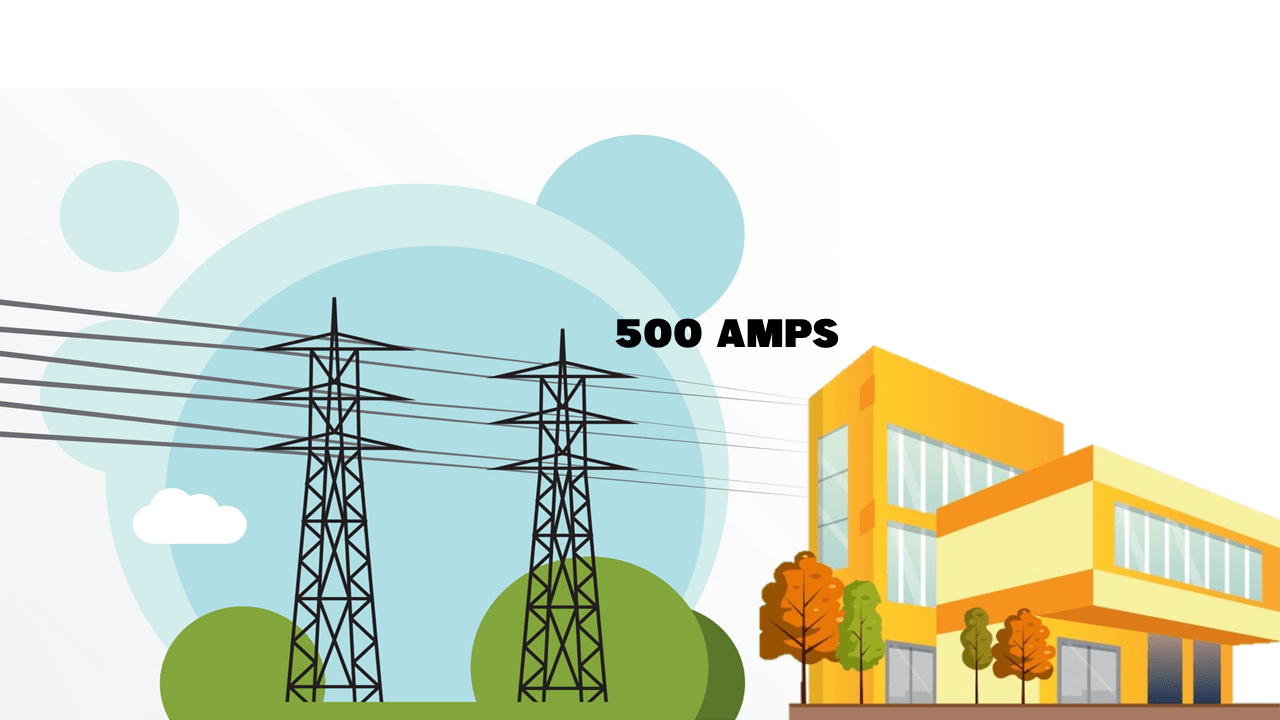
The electricity comes to one main point in a building. That main point is called a breaker panel or a breaker box. From that box, the electricity is then distributed in limited quantities (or amps) to the other rooms within the building.
The breaker box or breaker panel looks like this:
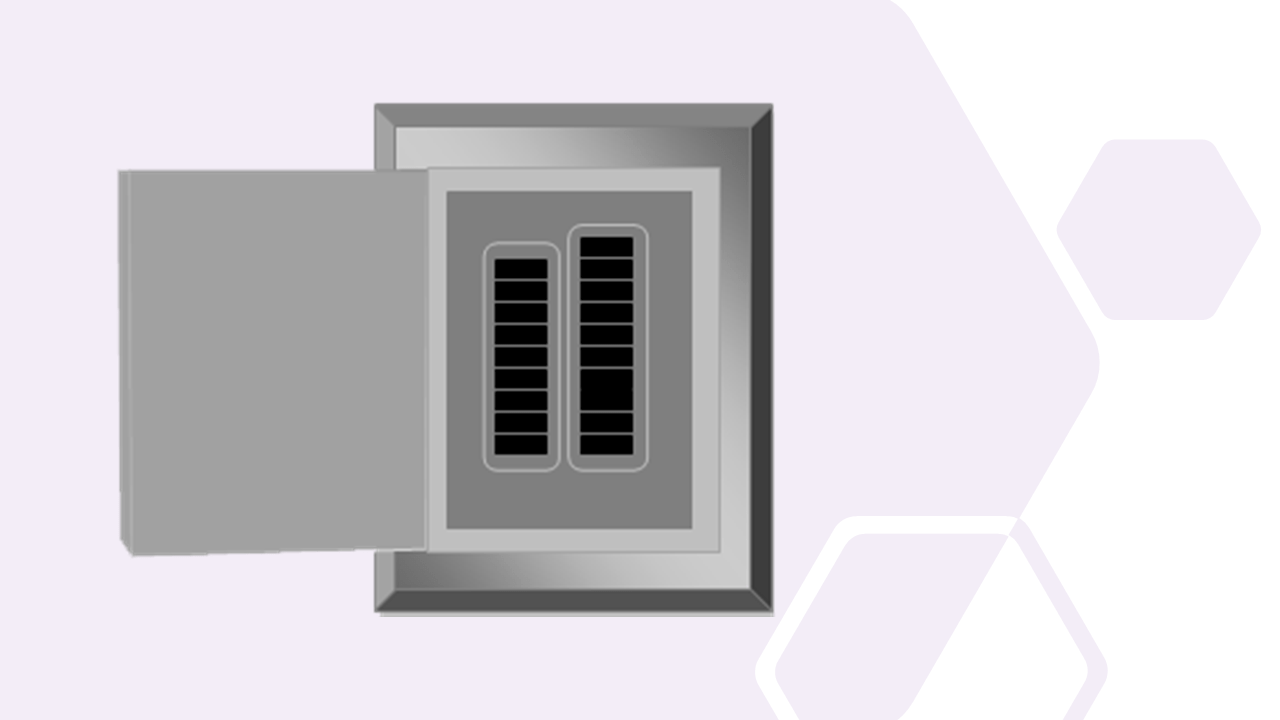
From the breaker panel, the electrical lines are run through the walls of the building to each room. A pre-determined amount of electricity is given to each room and can be as much or as little as the architect for the building desires. For this exercise, we are going to assume that we break up the 500 amps evenly to each room of our building.
Let’s imagine we are working in the ballroom.
We saw in our diagram that the entire building has 500 amps, and the ballroom is distributed 100 of those amps. Because electricity is powerful and can be dangerous, electricians distribute the ballroom’s 100 amps into 5 groups of dedicated 20-amp allotments. As the power is distributed to the different parts of the ballroom, the breaker panel will be labeled so that people can easily see which breakers are connected to which outlets. It could look like this:
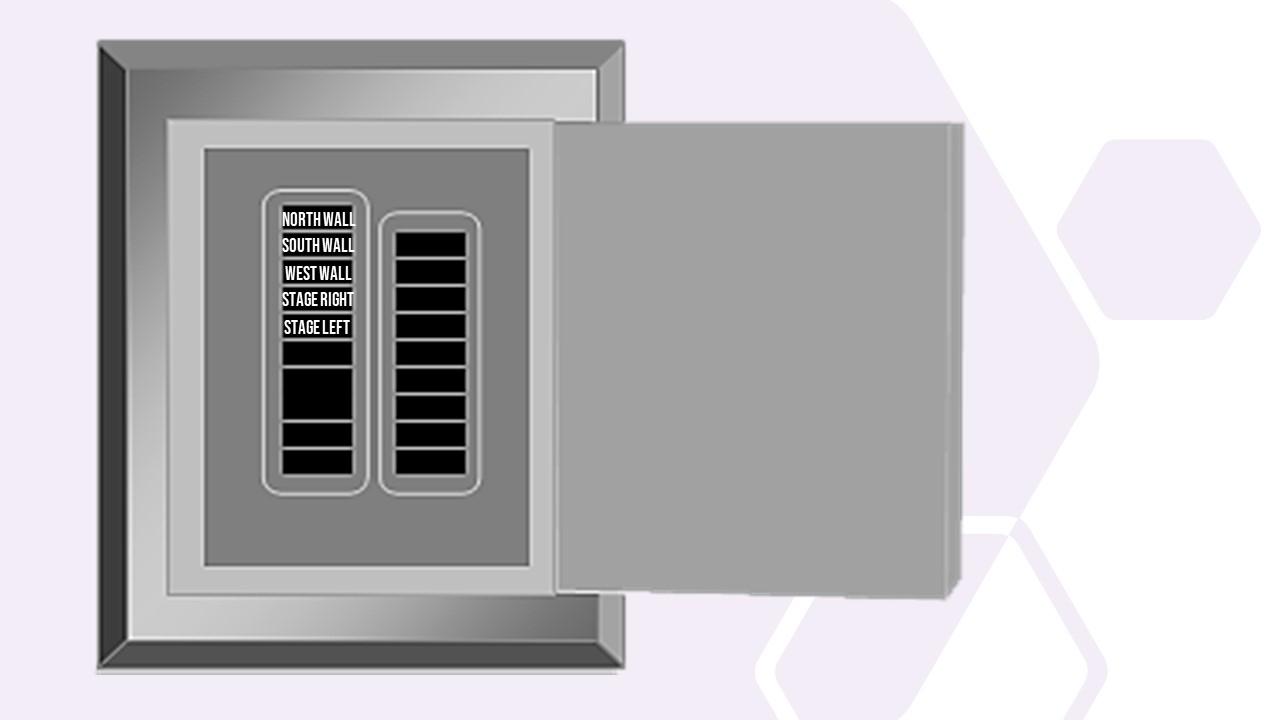
The dedicated 20-amp lines are then run from the breaker panel to the ballroom and tied into to the outlets. Some of those outlets will share the same 20 amps, as you can see in the diagram below:
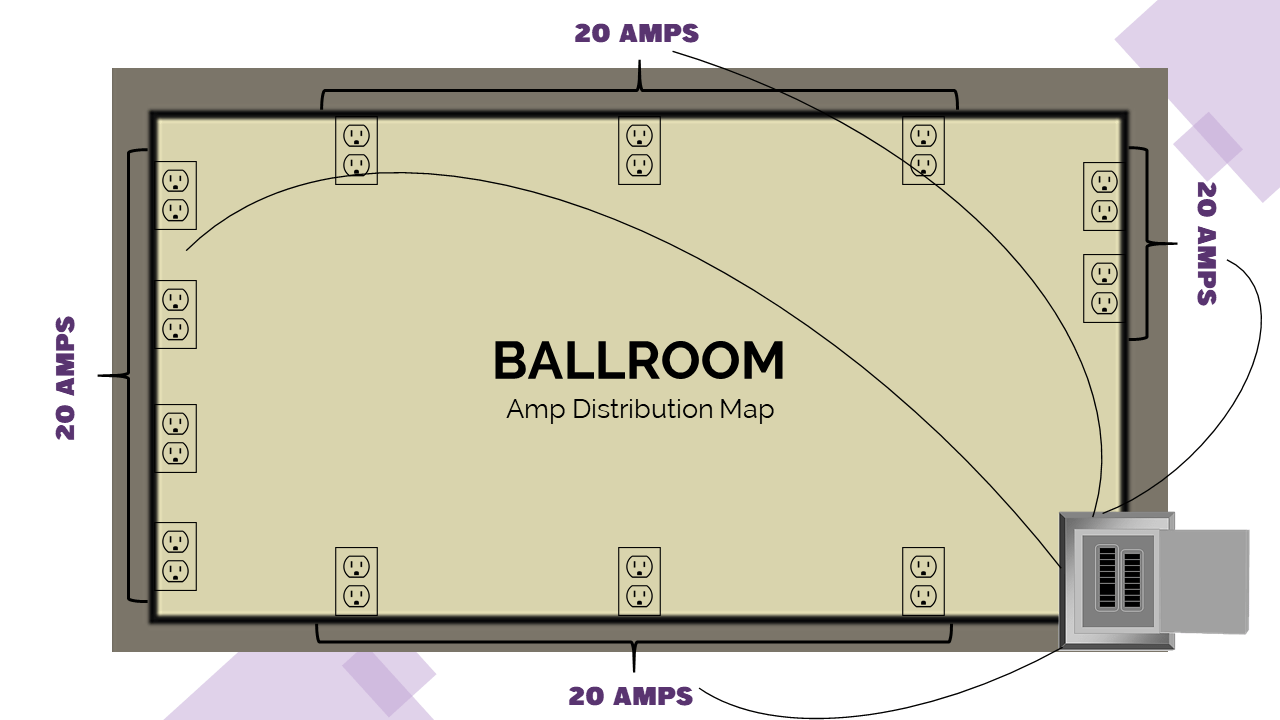
In most cases, each wall of the ballroom will get their own, dedicated 20 amps. Because there is a total of 100 amps and there are only 4 walls, there would be an additional 20 amps that could be used. Electricians add one extra grouping of 20-amp outlets on the wall with the stage, assuming that area of the room may require more power.
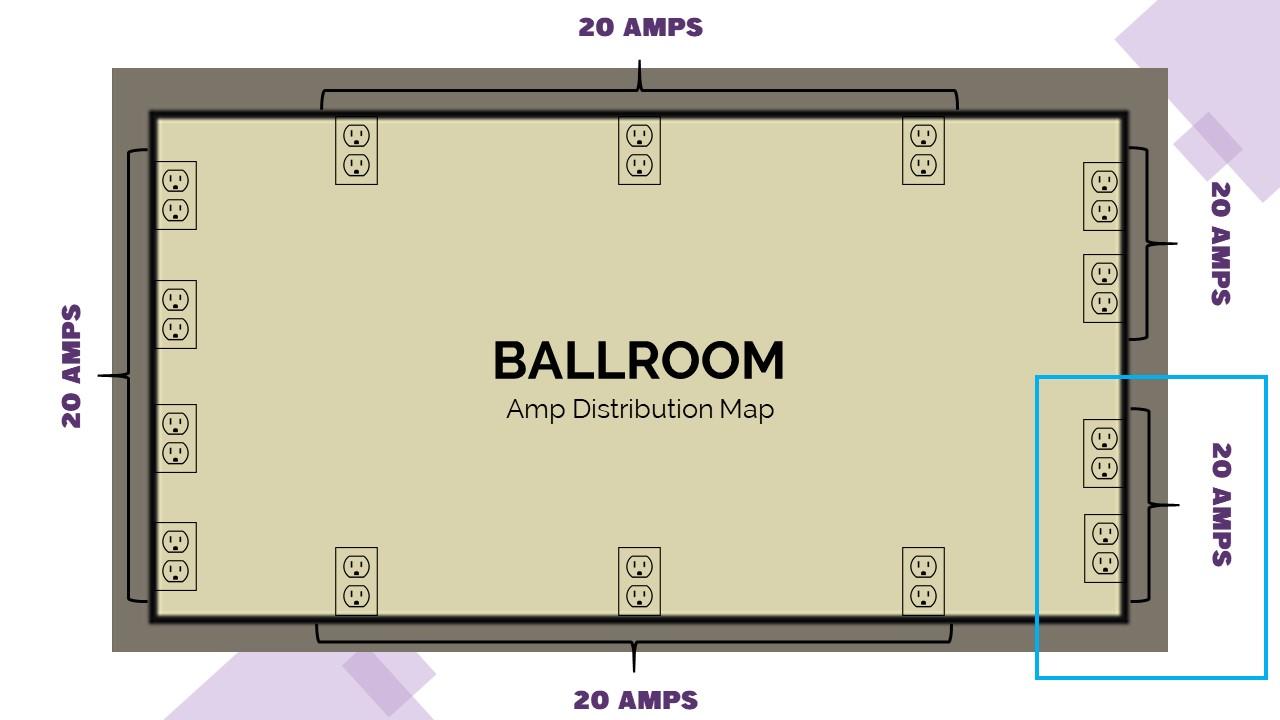
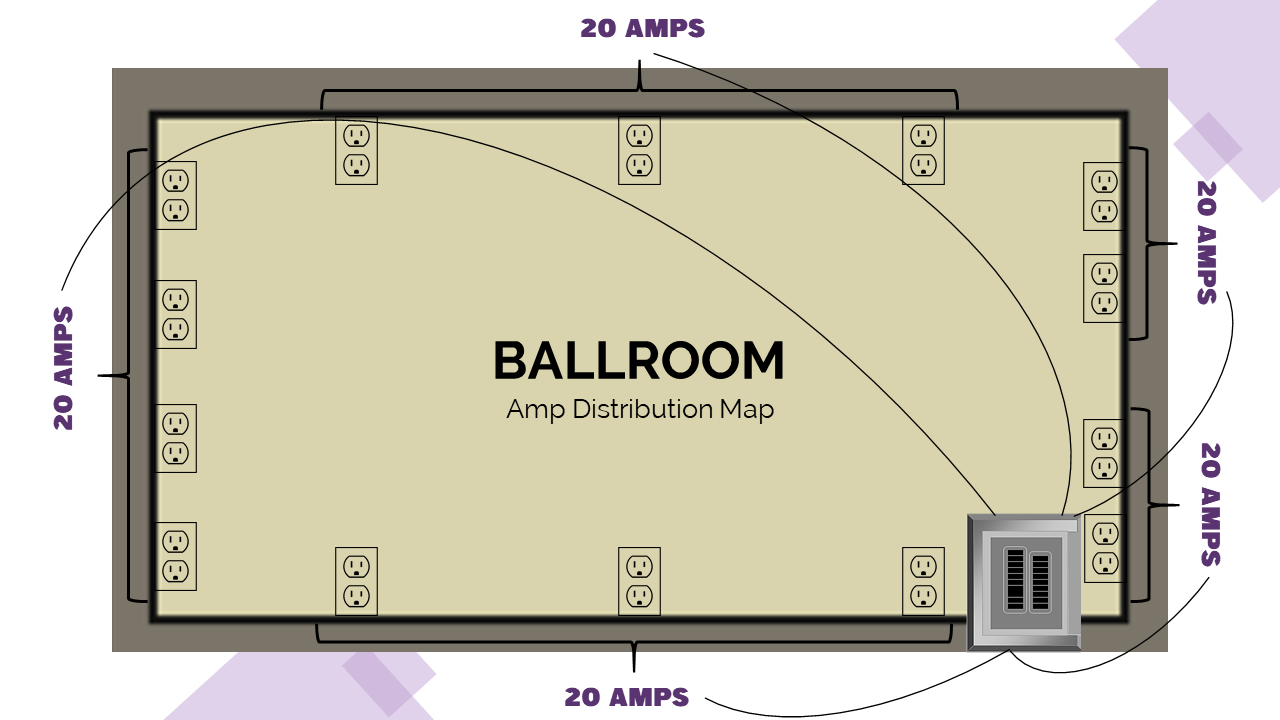
What is important to know is that each outlet does not have an unlimited amount of electricity (or amps) that you can take from it. The total amount of amps you can take from any one outlet (or groups of outlets) is 20. Because multiple outlets are installed per wall (which all draw from the 20 amps they were originally allocated) whatever you plug into those outlets will share the same 20 amps of allocated electricity.
If we wanted to think about this in terms of H2O, we would say the entire building has a supply of 500 gallons, and the ballroom needs 100 of those gallons. Each wall in the ballroom is given a faucet with 20 gallons available to use, and the wall that houses the stage gets an extra faucet with an additional 20 gallons. For convenience sake, we install additional faucets on each wall, each sharing the 20 total gallons allocated to that wall.
So far so good?
Now, let’s see the equipment we have that needs electricity. We have a coffee maker, some stage lighting, a sponsor table with a TV, and a small audio system for the ballroom.
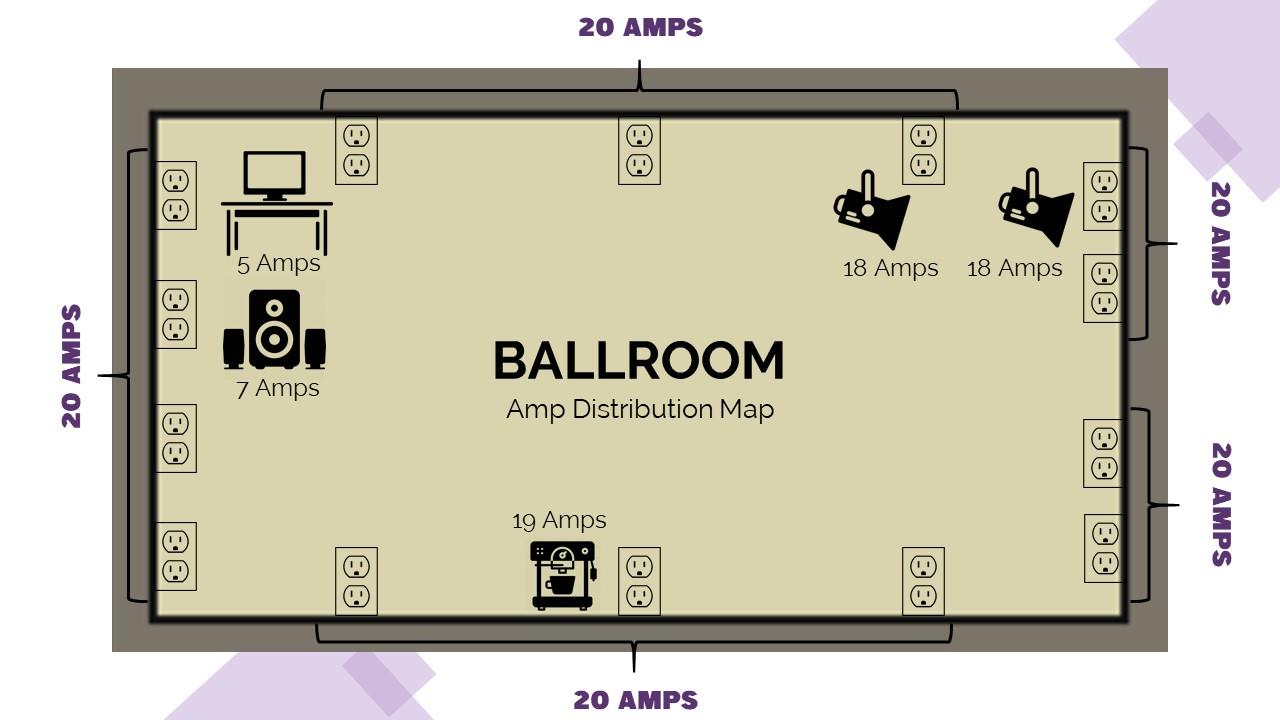
Each one of these items requires a specific amount of electricity to function. Thankfully the manufacturers of these items print that amount right on the item! It usually says something like ‘100 watts’. Watts is simply the amount of electricity that electronic equipment needs to properly function.
How do you find out how many watts an amp is? Good question. This will be the only math you ever have to remember for electricity and the only math we will talk about in this article: 1 Amp = 100 Watts. (For the tech people, 1 AMP is equal to .83 amps, but we like to round up to be safe. Oh, and this is assuming 120 volts). If a piece of equipment, like a coffee maker says that it is 1900 watts, you can imagine that it would use 19 amps. Or a lot of water from the faucet!
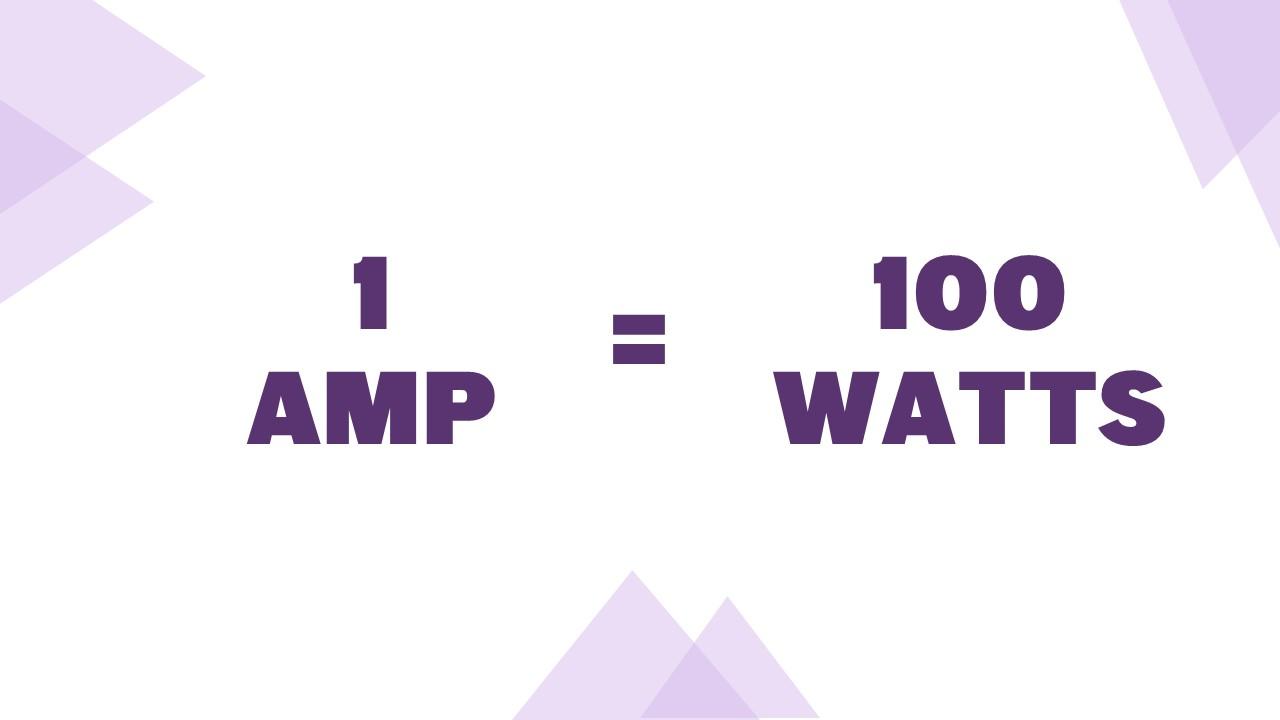
To put this in terms of our water analogy, think of a piece of equipment plugged into an outlet as a bucket of water that needs to be filled completely in order to properly function. And in order for that piece of equipment to continue to function properly, it needs to be constantly filled. Some pieces of equipment will require a much larger bucket with many more gallons of water. Some equipment just needs a beach pail full of water. But in order for that equipment to initially work, its bucket needs to be completely filled.
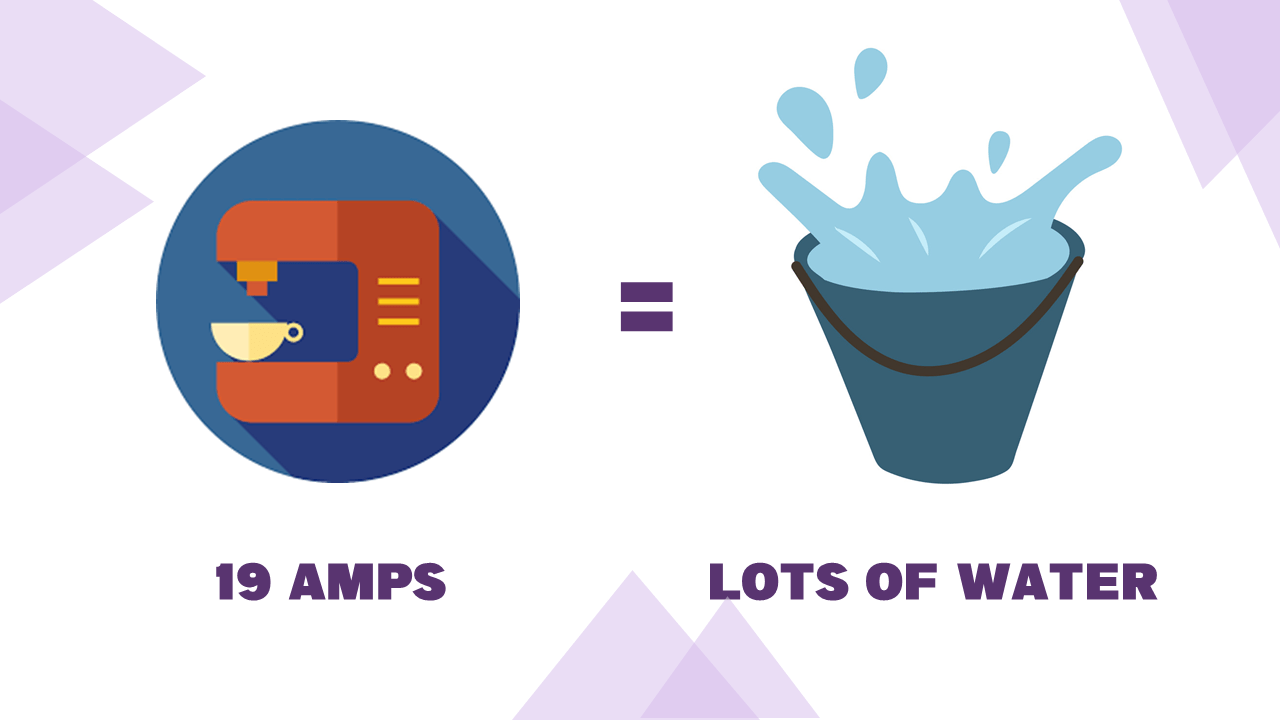
And as we said before, due to the powerful and dangerous nature of electricity, each outlet’s available electricity is thoughtfully limited – that is, to a maximum 20 amps and not a single amp more. Any more than 20 amps and the entire outlet will automatically shut off, as well as all the other outlets that are sharing those 20 amps. Many of you have probably experienced this happen and heard the term “the breaker tripped.” The breaker is an electrical control system which exists to shut down the flow of electricity once it has exceeded its allocated capacity. The breaker is what prevents the dangerous consequences of a surge of electricity, such as a fire.
Hopefully now it is clearer for you to understand that managing how much electricity you need and where equipment is plugged in throughout a room is critically important. You can’t just go plugging equipment in to any outlet that you see. So how exactly do you decide where to plug things in?
Once you know the equipment needed for your event and the amps required to operate that equipment, you can create a power plan. In this case, you can see below how many amps are needed for each of the items that we need to plug in. You can also see the outlets we decided to plug the equipment into.
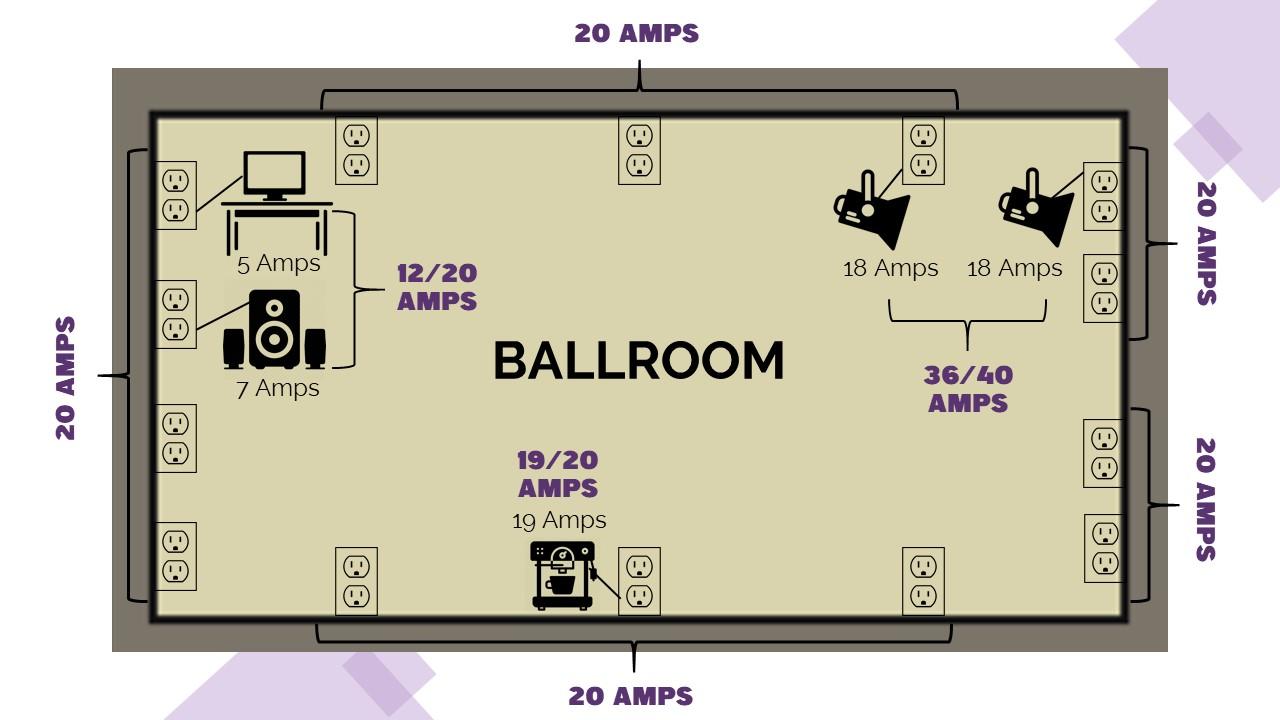
It is important to remember that many of the outlets in the room are all connected and share the same 20 amps that have been allocated to each wall. If the outlet you plug one piece of equipment into is sharing the same available electricity as two other outlets on the same wall – that also have equipment plugged in – you could trip the breaker if you go over the 20-amp allotment. In this example we are showing you the outlets that no one could use once we start plugging things in.
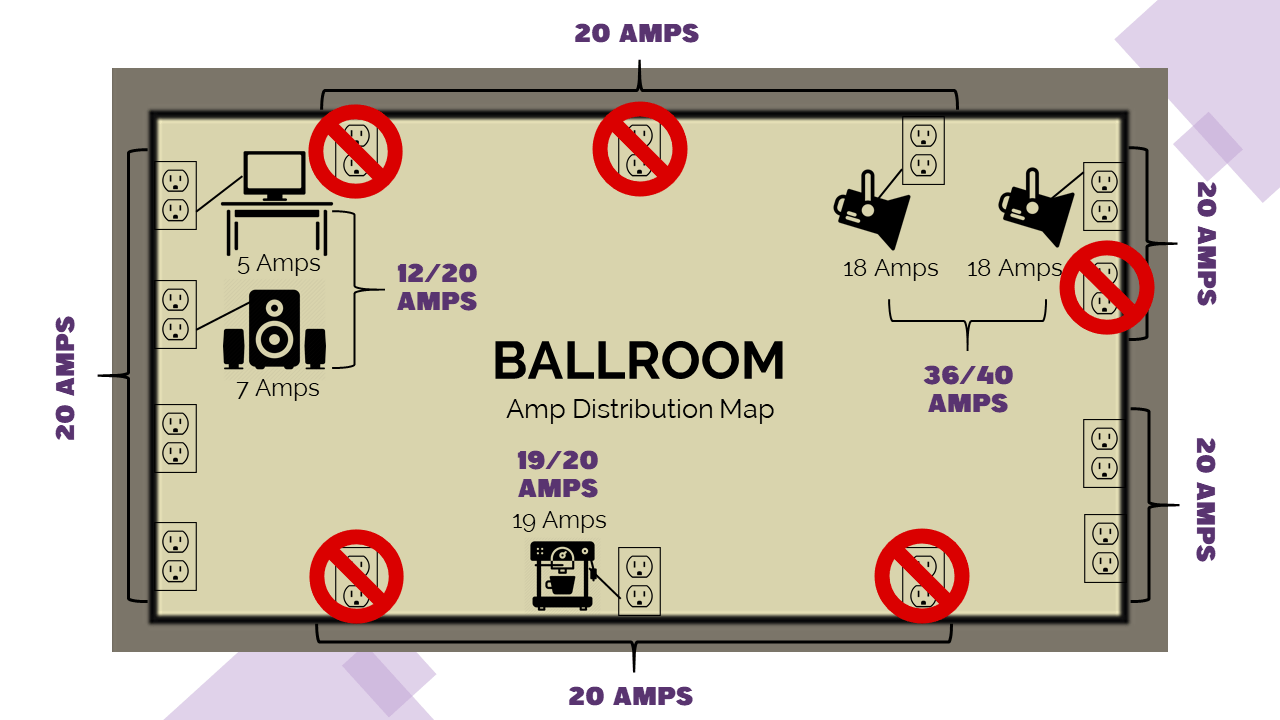
The coffee maker needs 19 amps to work properly. When you plug it in, you need to be sure you’re using an outlet that is dedicated solely to the coffee maker. You will only have 1 amp of electricity leftover for something else, but there isn’t much that can operate with just 1 amp. So, you need to be sure nothing else is plugged into that outlet for as long as the coffee maker is being used. We had a total of 100 amps coming into the room, we now have 80 left.
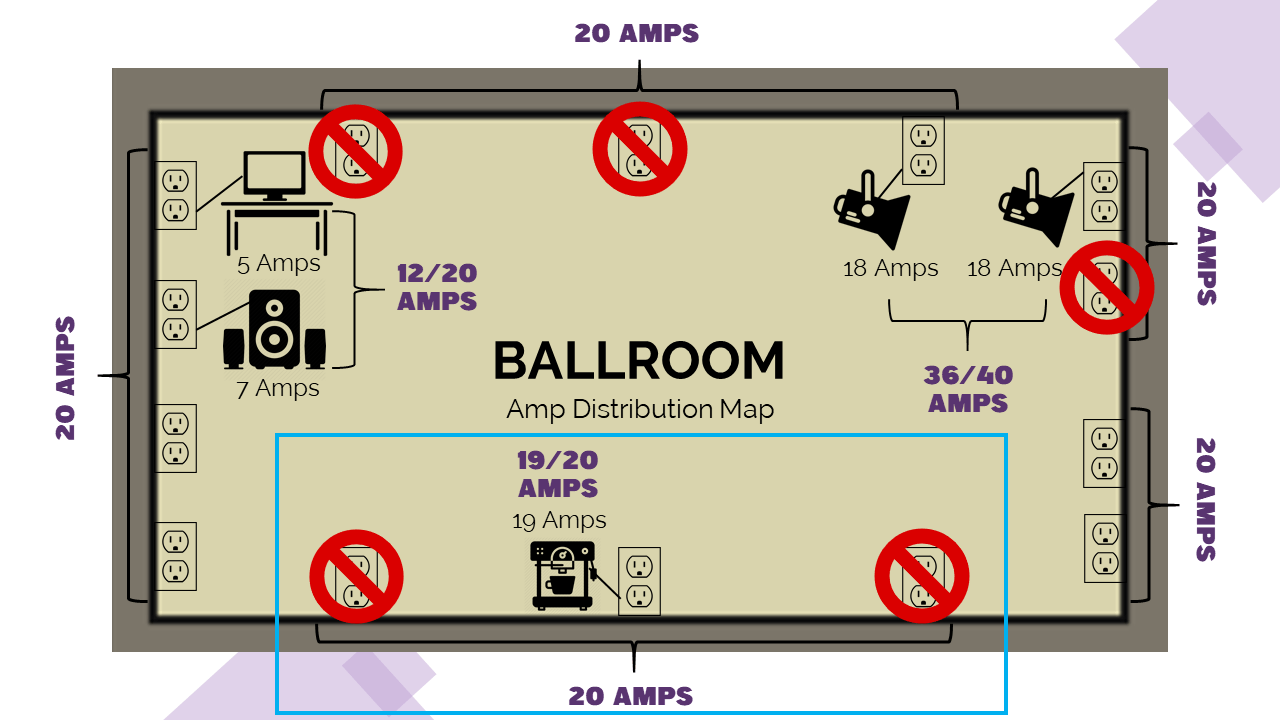
Stage lighting is power hungry. It is going to require 36 amps to properly work. We will need to divide the equipment up between 2 different outlets and again, those outlets can only be used for the lighting. Having 4 amps left over isn’t a bad thing. But we still don’t want anyone plugging things in to that outlet, to be on the safe side. We will assume those extra 4 amps are not available to us anymore. We now have 40 amps left available in the ballroom.
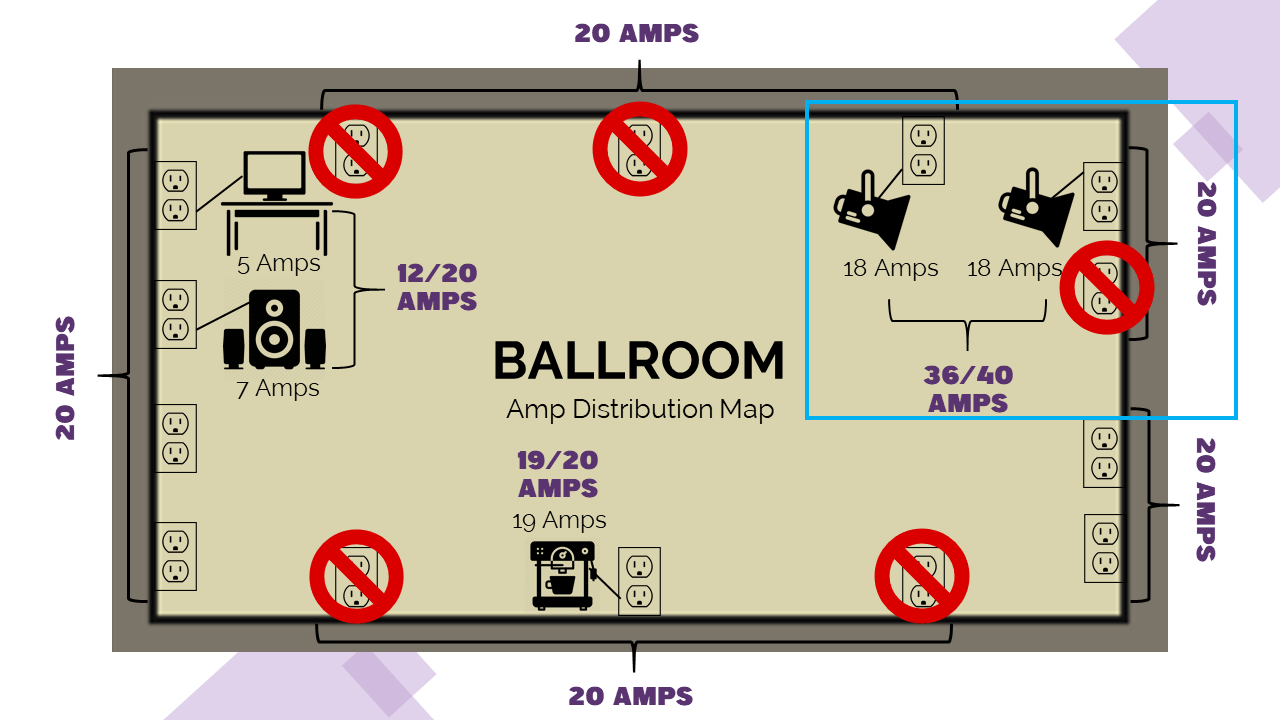
The sponsor table requires 5 amps and the small audio system only requires 7 amps. You could have both the sponsor table and the audio system plugged into the same outlet if you wanted to. You would still have spare electricity for other things to be plugged in as well. You now have roughly 28 amps left over. And that is a good thing! You will always have other vendors come in needing electricity, so having extra available for them puts you in the best position. 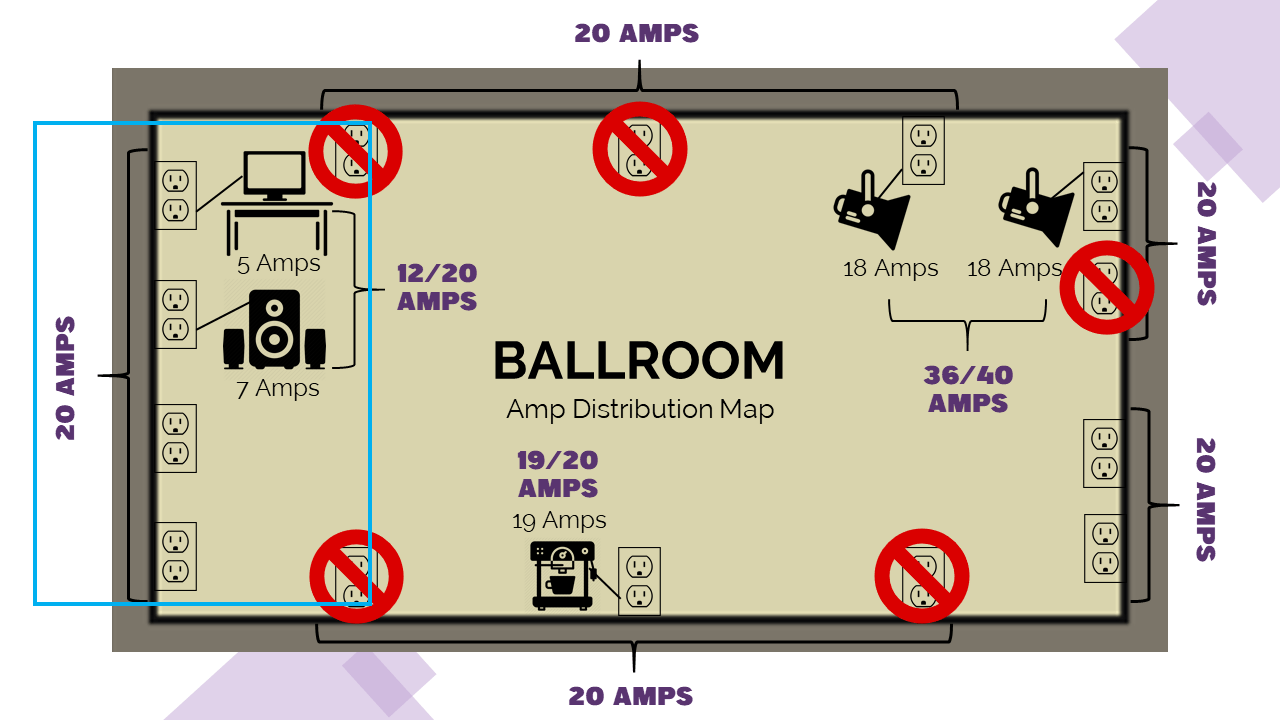
But… let’s say a band shows up. And you didn’t know about or plan on them performing. They need two 20-amp outlets to plug into. In this scenario, you have one open set of outlets on the stage. But that’s it. Even though there are 2 physical outlets, they both share the same 20 amps. The lighting outlet on the stage only has 4 amps of electricity left over on it. That’s not enough. If the band were to plug into both the lighting outlets and the available outlets, there is 100% chance that the stage lighting outlet, and whatever equipment for the band that was plugged into that outlet, would turn off after a few minutes. Which would mean the lighting would turn off as well. Not a good thing for the attendees in the room. Not a good thing for the band. You will need to find more electricity or ask the band to cut down their power needs to only use 20 amps.
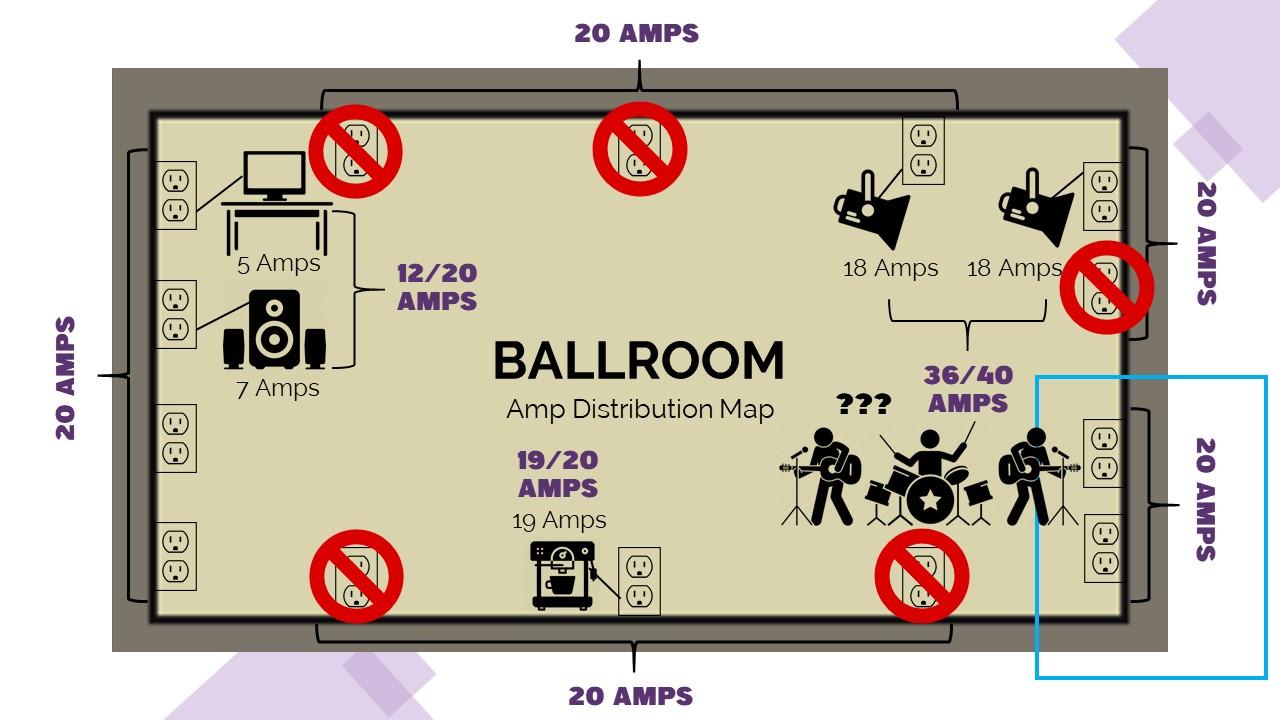
Trying to manage electricity from the existing outlets is always difficult. Especially for the larger events. This is why many larger audio-visual set ups require electricity that does NOT come from the outlets on the walls. In most cases, the AV company can bypass the ballroom power and tie directly into the building power (the 500 amps that the power company has allotted them), by using very specialized cables. This is common referred to as a “power Drop” and looks just like this:
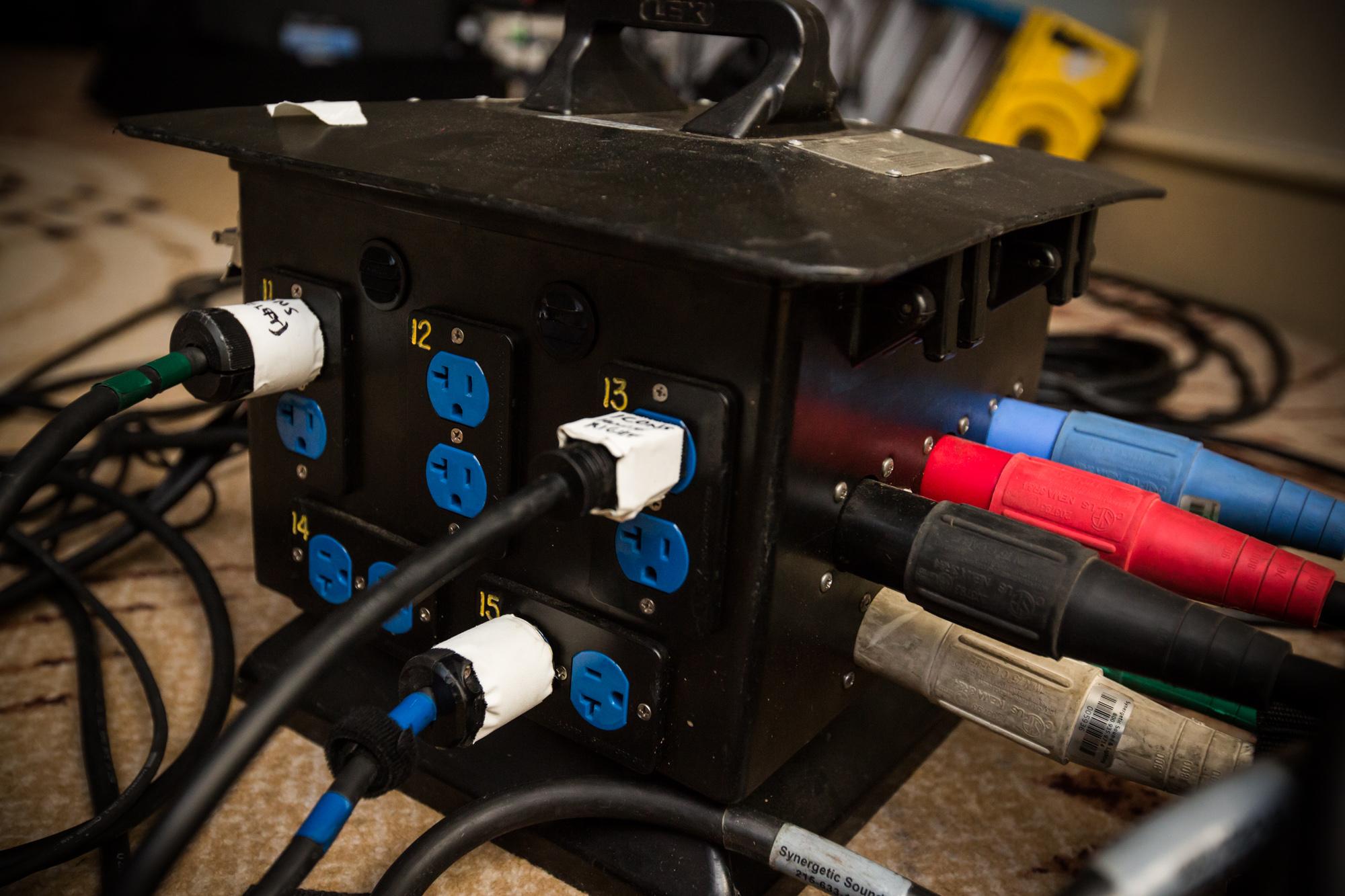
This system is capable of sourcing electricity from a particular place in the building and directing it to a specific part of the ballroom where it’s needed. The AV company can then be responsible for anybody needing to use it.
For events that occur outdoors or in tents where there is no electricity readily available, generators are the best option. Think of a generator as a massive water tower. To create the electricity, you need gas to keep the generator running. You can get all different kinds of generators, and sometimes if a building doesn’t have enough power, you’ll see generators outside which cables are run from up the side of the building or through windows in order to get the required amount of electricity to the event space inside.
This picture is an example of large generators that can deliver power to indoor or outdoor events.
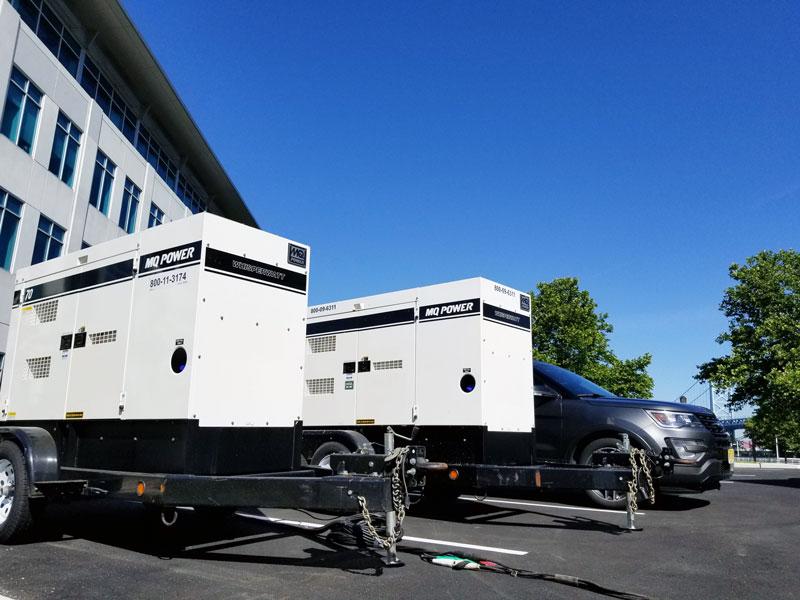
When the power plan is properly thought out and all the professionals work together, everyone can have enough power. To make sure you are properly prepared as the planner, here are some important things you should think when it comes to power:
- Know all the power requirements from your professional vendors well in advance.
- Know the total amount of power available to you in the rooms you are working in. Including dedicated outlets.
- Ask if dedicated power drops are available for you to use.
- Do a site survey and find out where the breaker panel is. Is it clearly labeled? (probably not!) Is it close to the rooms you are working in and easy to get to? If something does trip a breaker, you want to know exactly where to go.
- Figure out the best place to put the professionals that need power. This will cut down on a lot of questions the day of the event.
- Tell the professionals what they need to bring. Many professionals show up thinking extension cords and power strips will be available to them.
- Tell your professionals ahead of time what outlets they can use. Many times, professionals think electricity is readily available to them and they can plug anything they want into any outlet they choose.
- Make sure you have extra electricity! You don’t want to be surprised the day of the event. Having a spare, dedicated 20 amps for that last minute request is crucial.
- Work with a reputable AV company, like Synergetic, to help you manage all things electrical, so you can go concentrate on the client!
I hope this was helpful in learning a little more about electricity, and that thinking about it like water from a faucet will help you visualize what is really going on in the ballrooms at your events.
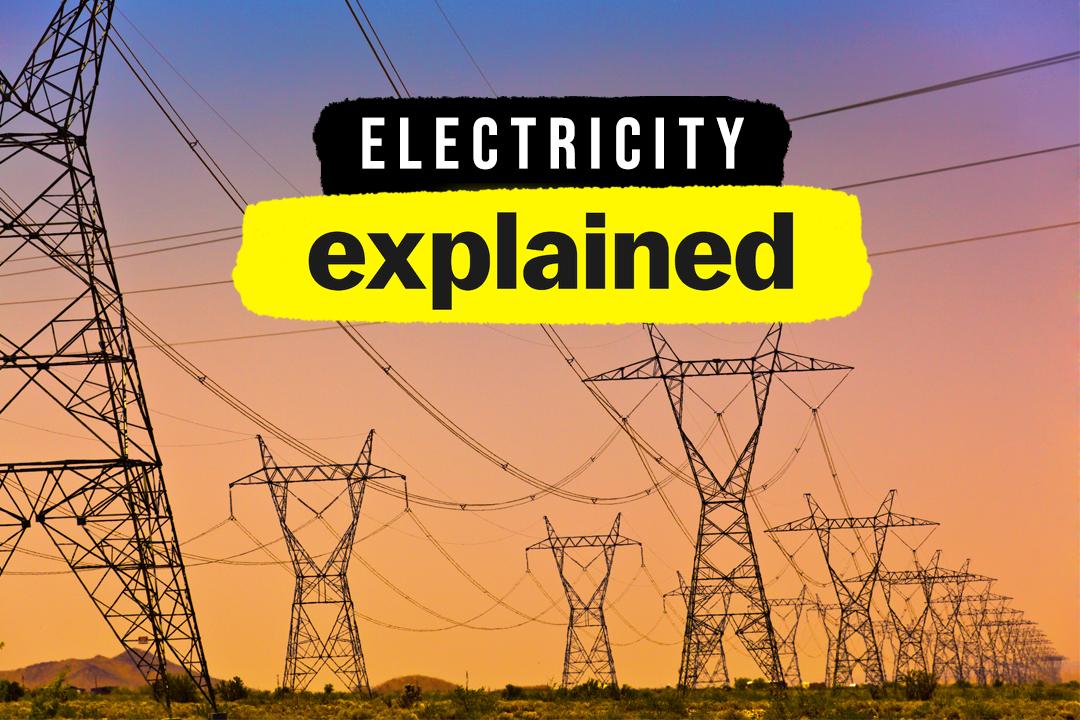
 March 7, 2021
March 7, 2021  Synergetic
Synergetic  Helpful Information
Helpful Information  June 30, 2025
June 30, 2025  Synergetic
Synergetic  Uncategorized
Uncategorized